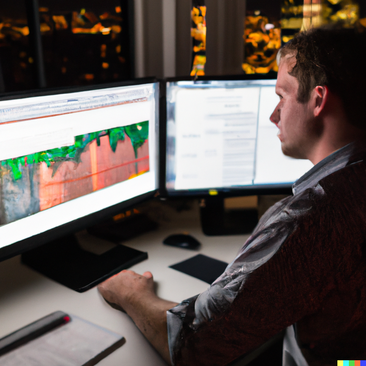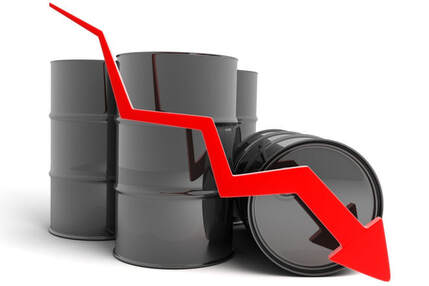
Remember when I first dipped my toes into the ocean of financial markets? The wild ups and downs, the uncertainty, the thrill of a successful trade - it all felt overwhelming yet invigorating. My journey took me through various trading strategies until I landed on one that balanced my lifestyle and perfectly - swing trading. If you're like me, looking for a trading strategy that doesn't demand your attention 24/7, then swing trading might just be the perfect fit for you. It was for me.
Before we dive deep into the subject, let's define some essential terms. Swing trading is a middle ground between day trading, where you buy and sell within a single day, and long-term investing that holds positions for months or even years. On the other hand, swing trading typically involves keeping positions for a few days to a few weeks to capture short-term market gains. Now that we're clear on these terms, let's explore why swing trading could be your ideal strategy.
Swing trading comes with a slew of benefits, and here's a snapshot:
Ready to dip your toes into swing trading? Follow this step-by-step guide to get started.
Like any financial endeavor, swing trading is not without risks.
Remember, successful swing trading requires a sound understanding of financial markets, a well-thought-out strategy, and effective risk management.
t's crucial to consider these factors and take precautionary measures when entering the swing trading arena.
To aid your swing trading journey, I recommend gaining specialized knowledge from a trading mentor: https;//groktrade.com/tradingmentor.html.
Swing trading, with its balanced approach to time commitment and profitability, could be your next step in financial investment. It offers a flexible, and relatively low-stress alternative to day trading and potential higher returns compared to long-term investing.
Do you have any experiences with swing trading, or perhaps some burning questions? Share your thoughts in the comments section below, let's learn from each other's experiences.
Don't forget to share this blog with your network.
Happy trading!
Des Woodruff (aka d-seven)
Before we dive deep into the subject, let's define some essential terms. Swing trading is a middle ground between day trading, where you buy and sell within a single day, and long-term investing that holds positions for months or even years. On the other hand, swing trading typically involves keeping positions for a few days to a few weeks to capture short-term market gains. Now that we're clear on these terms, let's explore why swing trading could be your ideal strategy.
Swing trading comes with a slew of benefits, and here's a snapshot:
- Flexibility: Swing trading allows you to balance life and work without needing to stare at your screen every minute. You can set up your trades and check their progress occasionally, providing you the freedom to pursue other interests.
- Less Stress: The relaxed pace of swing trading removes the rush often associated with day trading. You can take your time to analyze and make informed decisions without the constant market pressure.
- Lower Risk: Swing trading positions last from a few days to weeks, reducing your exposure to the whims of sudden market fluctuations that are common in day trading.
- More Opportunities: With swing trading, you have the chance to capitalize on short-term market movements. The ability to trade in both up and down markets and use a variety of strategies provides a sea of opportunities.
- Better Returns: Swing trading, due to its short-term gain focus, can yield higher returns than long-term investing. However, remember that your success significantly depends on your strategy execution, and risk management,
Ready to dip your toes into swing trading? Follow this step-by-step guide to get started.
Like any financial endeavor, swing trading is not without risks.
- Potential for Losses: All trading involves risk, and swing trading is no exception. Without proper risk management strategies, traders may incur substantial losses.
- Emotional Stress: Swing trading can be emotionally stressful, especially when the markets move against your positions. It requires discipline and emotional control to prevent rash decisions based on fear or greed.
- Financial Risk: While swing trading has the potential for high returns, it also carries the potential for significant financial loss. It's important that traders only invest money that they can afford to lose.
- Dependence on Timing: Swing trading is heavily dependent on timing. Buying and selling at the wrong time can result in losses, even if your overall analysis was correct.
Remember, successful swing trading requires a sound understanding of financial markets, a well-thought-out strategy, and effective risk management.
t's crucial to consider these factors and take precautionary measures when entering the swing trading arena.
To aid your swing trading journey, I recommend gaining specialized knowledge from a trading mentor: https;//groktrade.com/tradingmentor.html.
Swing trading, with its balanced approach to time commitment and profitability, could be your next step in financial investment. It offers a flexible, and relatively low-stress alternative to day trading and potential higher returns compared to long-term investing.
Do you have any experiences with swing trading, or perhaps some burning questions? Share your thoughts in the comments section below, let's learn from each other's experiences.
Don't forget to share this blog with your network.
Happy trading!
Des Woodruff (aka d-seven)



 RSS Feed
RSS Feed